第44章 MONEY OR SIMPLE CIRCULATION(25)
So far as use-value is concerned,each commodity represents only one element of physical wealth,only one separate facet of wealth,through its relation to a particular need.But money satisfies any need since it can be immediately turned into the object of any need.Its own use-value is realised in the endless series of use-values which constitute its equivalents.All the physical wealth evolved in the world of commodities is contained in a latent state in this solid piece of metal.Thus whereas the prices of commodities represent gold,the universal equivalent or abstract wealth,the use-value of gold represents the use-values of all commodities.Gold is,therefore,the material symbol of physical wealth.It is the "epitome of all things"(Boisguillebert),the compendium of social wealth.As regards its form,it is the direct incarnation of universal labour,and as regards its content the quintessence of all concrete labour.It is universal wealth in an individual form.[2]Functioning as a medium of circulation,gold suffered all manner of injuries,it was clipped and even reduced to a purely symbolical scrap of paper.
Its golden splendour is restored when it serves as money The servant becomes the master.[3]The mere underling becomes the god of commodities.[4]a.Hoarding Gold as money was in the first place divorced from the medium of circulation because the metamorphosis of the commodity was interrupted and the commodity remained in the form of gold.This happens whenever a sale is not immediately turned into a purchase.The fact that gold as money assumes an independent existence is thus above all a tangible expression of the separation of the process of circulation or of the metamorphosis of commodities into two discrete and separate transactions which exist side by side.The coin itself becomes money as soon as its movement is interrupted.In the hands of the seller who receives it in return for a commodity it is money,and not coin;but when it leaves his hands it becomes a coin once more.Everybody sells the particular commodity which he produces,but he buys all other commodities that he needs as a social being.How often he appears on the market as a seller depends on the labour-time required to produce his commodity,whereas his appearance as a buyer is determined by the constant renewal of his vital requirements.In order to be able to buy without selling,he must have sold something without buying.The circuit C --M --C is indeed the dynamic unity of sale and purchase only in so far as it is simultaneously the continuous process of their separation.
So that money as coin may flow continuously,coin must continuously congeal into money.The continual movement of coin implies its perpetual stagnation in larger or smaller amounts in reserve funds of coin which arise everywhere within the framework of circulation and which are at the same time a condition of circulation.The formation,distribution,dissolution and re-formation of these funds constantly changes;existing funds disappear continuously and their disappearance is a continuous fact.This unceasing transformation of coin into money and of money into coin was expressed by Adam Smith when he said that,in addition to the particular commodity he sells,every commodity-owner must always keep in stock a certain amount of the general commodity with which he buys.We have seen that M --C,the second member of the circuit C --M --C,splits up into a series of purchases,which are not effected all at once but successively over a period of time,so that one part of M circulates as coin,while the other part remains at rest as money.In this case,money is in fact only suspended coin and the various component parts of the coinage in circulation appear,constantly changing,now in one form,now in another.The first transformation of the medium of circulation into money constitutes therefore merely a technical aspect of the circulation of money.[5]
The first spontaneously evolved form of wealth consists of an overplus or excess of products,i.e.of the portion of products which are not directly required as use-values,or else of the possession of products whose use-value lies outside the range of mere necessity.When considering the transition from commodity to money,we saw that at a primitive stage of production it is this overplus or excess of products which really forms the sphere of commodity exchange.Superfluous products become exchangeable products or commodities.The adequate form of this surplus is gold and silver,the first form in which wealth as abstract social wealth is kept.
It is not only possible to store commodities in the form of gold and silver,i.e.,in the material shape of money,but gold and silver constitute wealth in preserved form.Every use-value fulfils its function while it is being consumed,that is destroyed,but the use-value of gold as money is to represent exchange-value,to be the embodiment of universal labour-time as an amorphous raw material.As amorphous metal exchange-value possesses an imperishable form.Gold or silver as money thus immobilised constitutes a hoard .
In the case of nations with purely metallic currency,such as the ancients,hoarding becomes a universal practice extending from the individual to the State,which guards its State hoard.In Asia and Egypt,during their early period,these hoards were in the custody of kings and priests and served mainly as evidence of their power.In Greece and Rome the creation of State hoards became a principle of public policy,for excess wealth in this form is always safe and can be used at any moment.The rapid transfer of such hoards by conquerors from one country to another and their sudden effusion in part into the sphere of circulation are characteristics of the economy of antiquity.